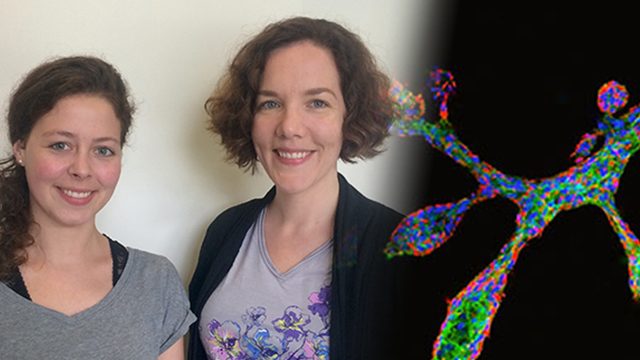SUMMARY
This is AI generated summarization, which may have errors. For context, always refer to the full article.

MANILA, Philippines – Scientists were able to grow miniature breasts from “cultured breast epithelial cells”, indicating a breakthrough in breast cancer research.
In a press statement, researchers led by Dr Christina Scheel of the Helmholtz Center in Munich said, “This technological breakthrough provides the basis for many research projects, both those aimed to understand how breast cancer cells acquire aggressive traits, as well as to elucidate how adult stem cells function in normal regeneration.” (READ: New targeted therapy shows promise vs breast cancer)
In Germany, one in 8 women is going to be diagnosed with breast cancer throughout her lifetime, the statement said. The rate of newly diagnosed breast cancer cases has doubled in the past 30 years. While deaths due to breast cancer have declined because of improved early detection and therapeutic options, some aggressive subtypes of breast cancer remain poorly understood and incurable.
Scheel said studying how normal breast stem cells function is crucial to a further understanding of breast cancer.
The aggressive behavior of breast cancer cells is traced to how the mammary gland develops and functions, according to the statement. The mammary gland itself “consists of a structure similar in form to a bunch of grapes: a number of branching hollow ducts terminate in tiny, milk-producing pouches on one end, and the nipple on the other. This network of ducts is embedded in fatty and connective tissue which lends the breast its overall form.”
Growing the breast
To grow the mini breast, Scheel’s team used a transparent gel in which cells divided and spread, similar to a developing mammary gland during puberty.
Researchers were able to grow the miniature mammary glands, thus allowing them to rebuild the 3-dimensional architecture of the mammary gland itself. The newly developed miniature breasts will allow researchers to study how cells create the hollow ducts that make a network of branches and end in grape-like structures to form the breast.
Stem cells constantly renew and remodel the breast throughout the lifespan of women to guarantee milk production for offsprings even after multiple pregnancies. But breast cancer cells are able to adopt properties of these stem cells to acquire aggressive traits. (READ: The killer no woman likes to talk about)
Using their miniature mammary glands, the researchers found that the “behavior of cells with regenerative capacity is determined by the physical properties of their environment.”
According to the study’s first author, Jelena Linnemann, they were able to demonstrate that increasing the rigidity of the gel led to the increased spread or the invasive growth of the cancer cells. “Similar behavior was already observed in breast cancer cells. Our results suggest that invasive growth in response to physical rigidity represents a normal process during mammary gland development that is exploited during tumor progression,” said Linnemann.
Co-author Lisa Meixner said that with their assay, “we can elucidate how such processes are controlled at the molecular level, which provides the basis for developing therapeutic strategies to inhibit them in breast cancer.”
A copy of the study may be accessed in scientific research journal Development. – Mara Cepeda/Rappler.com
Add a comment
How does this make you feel?
There are no comments yet. Add your comment to start the conversation.